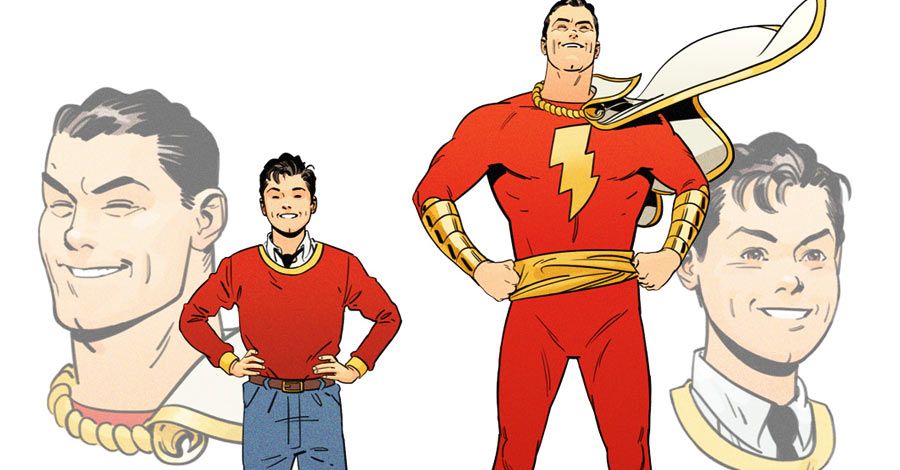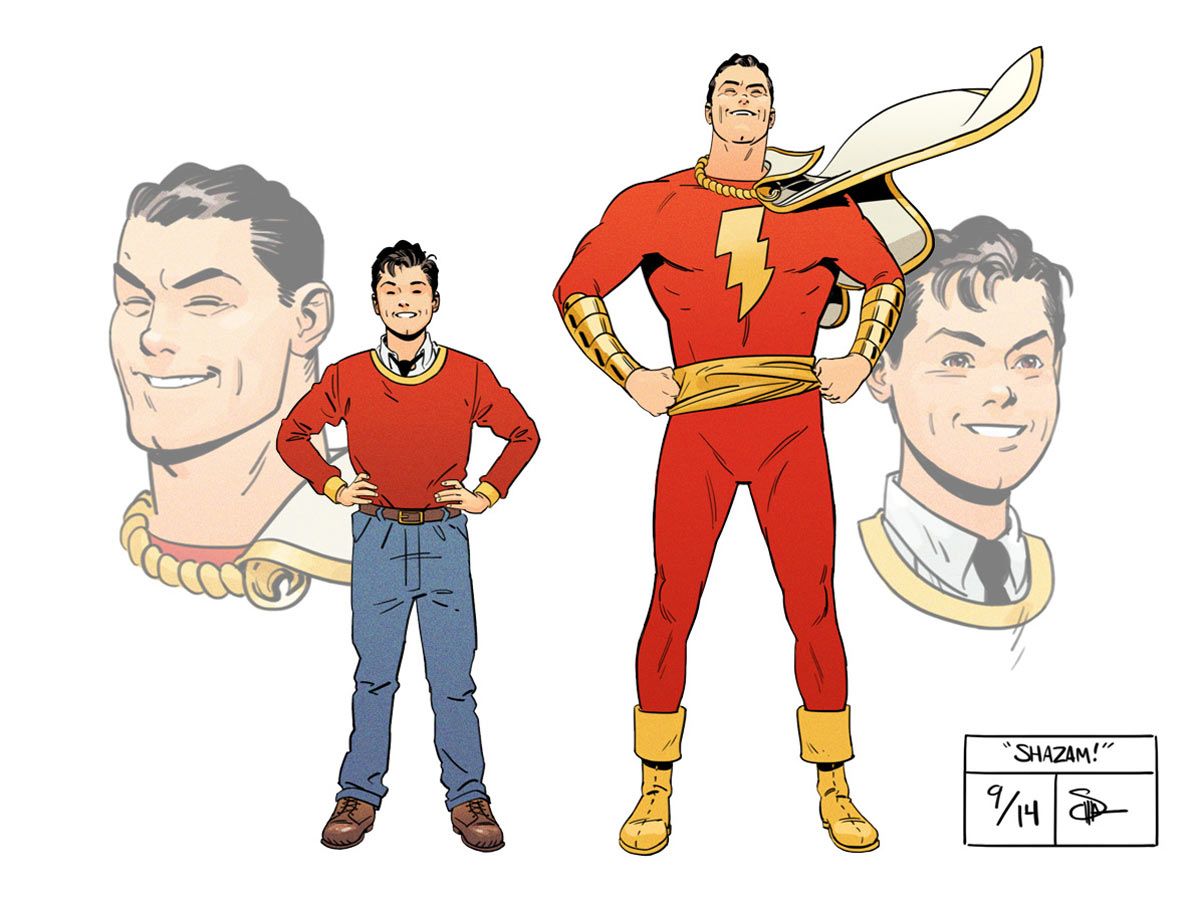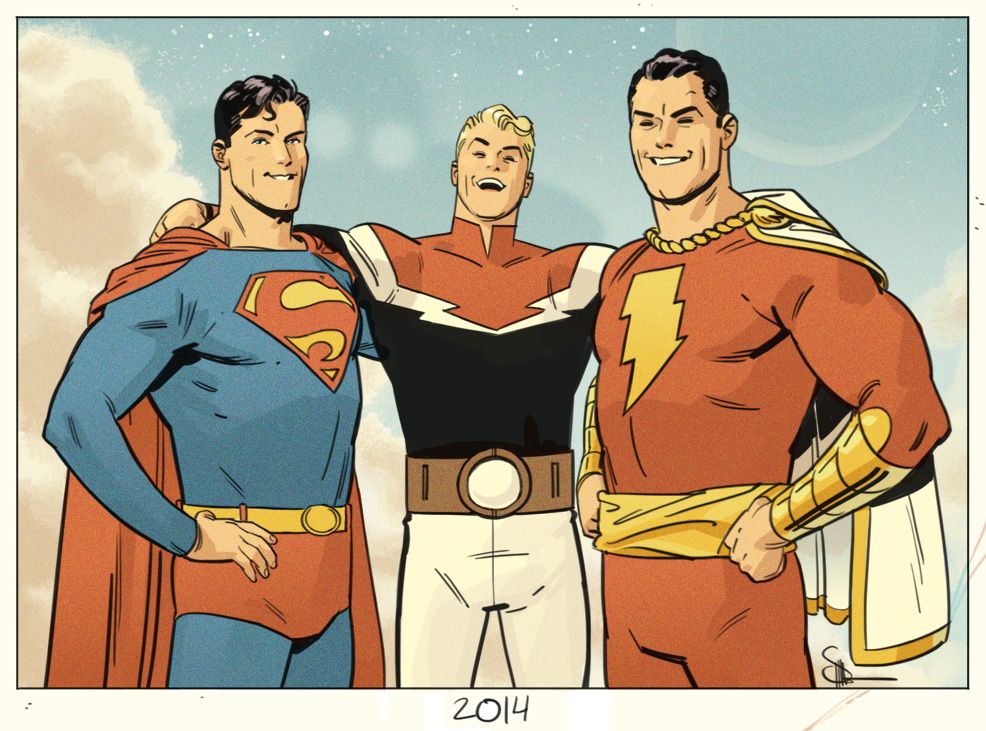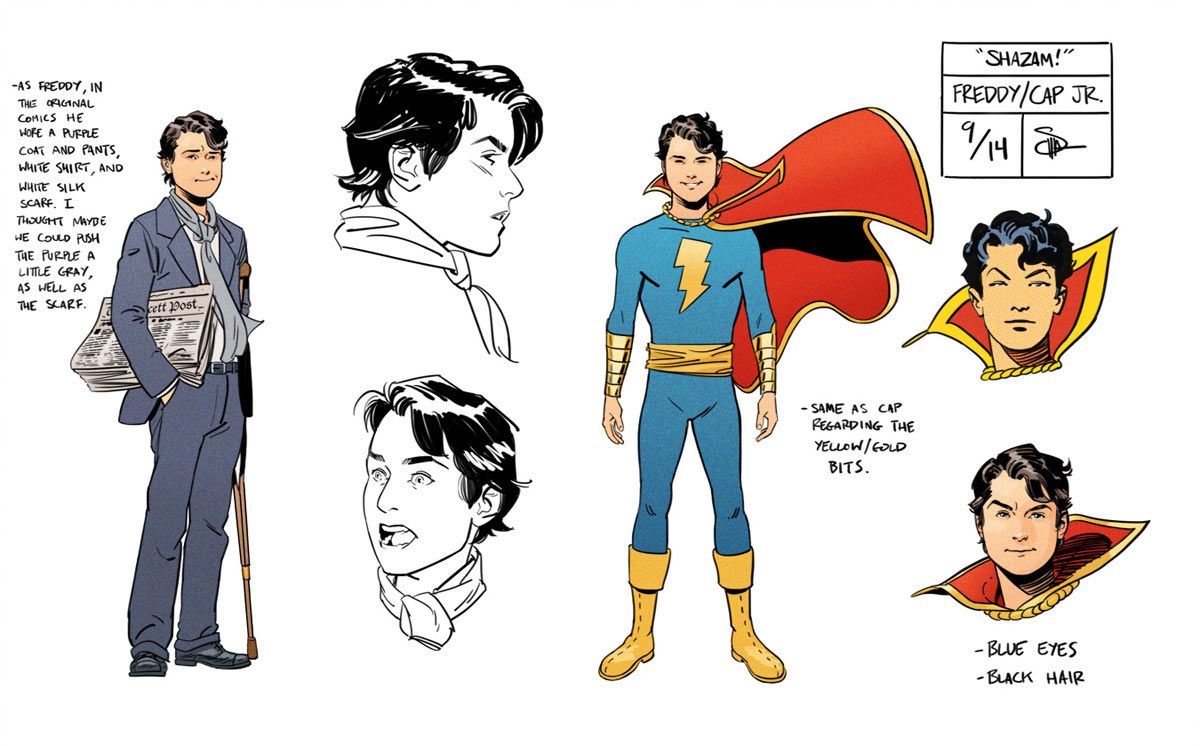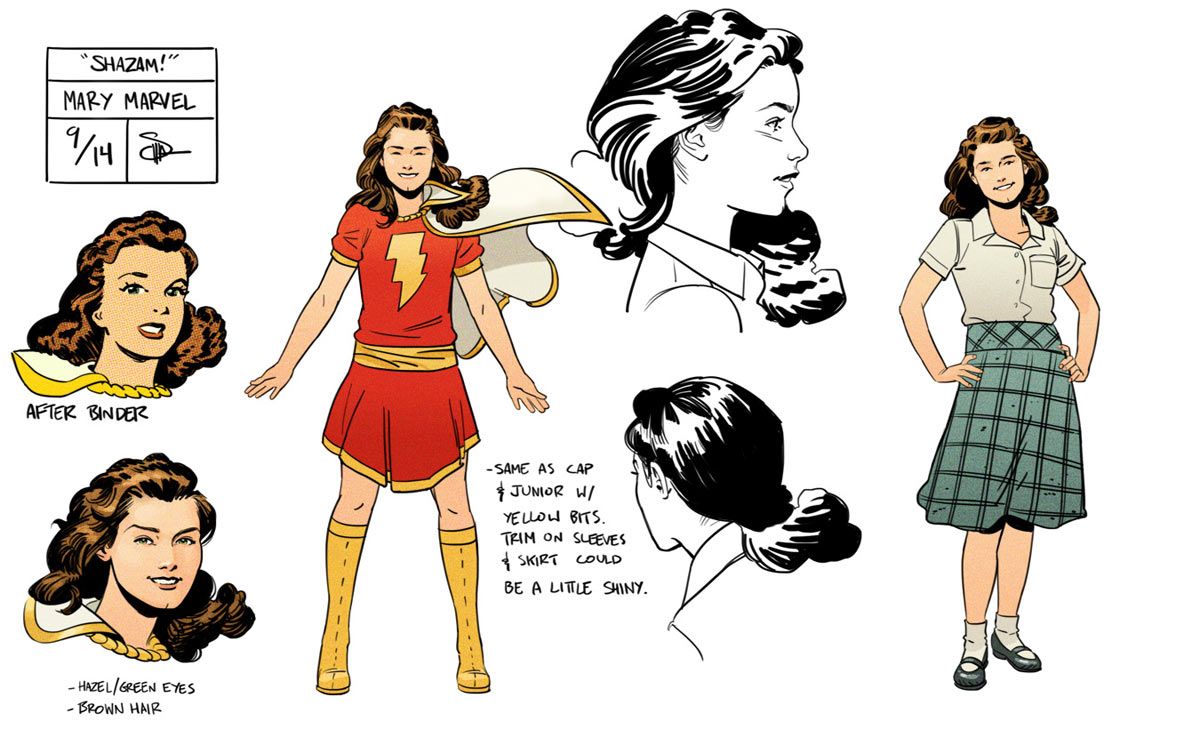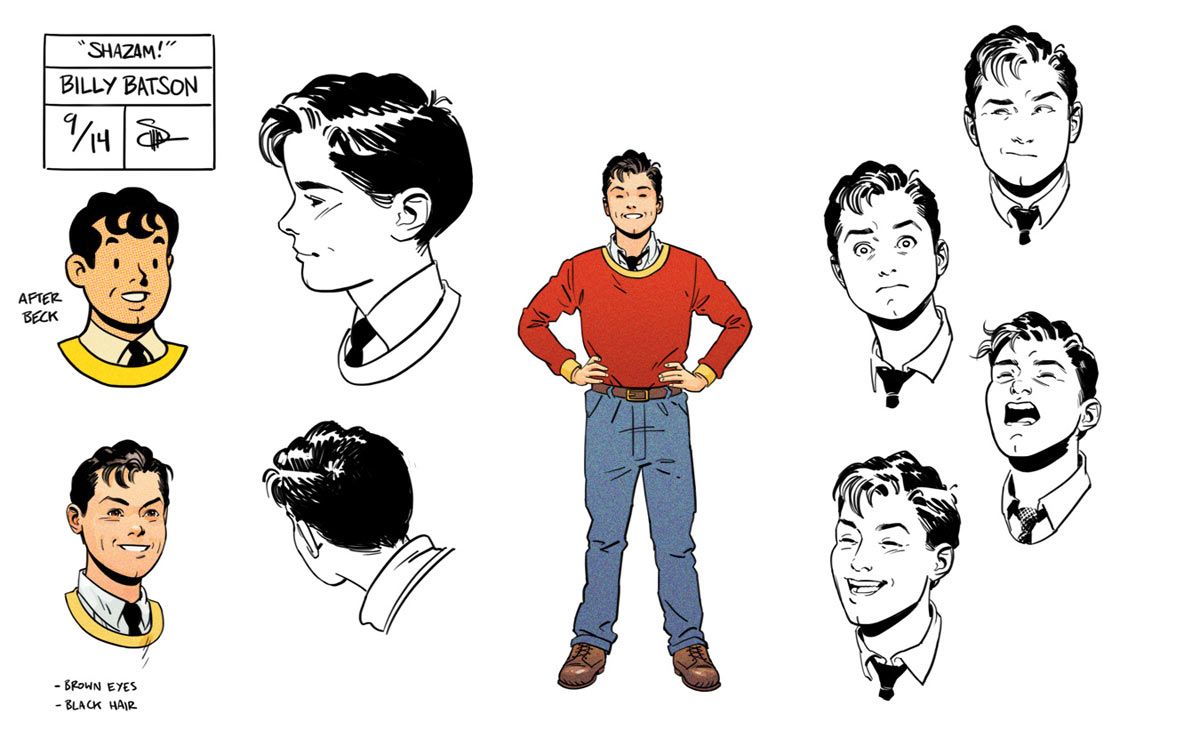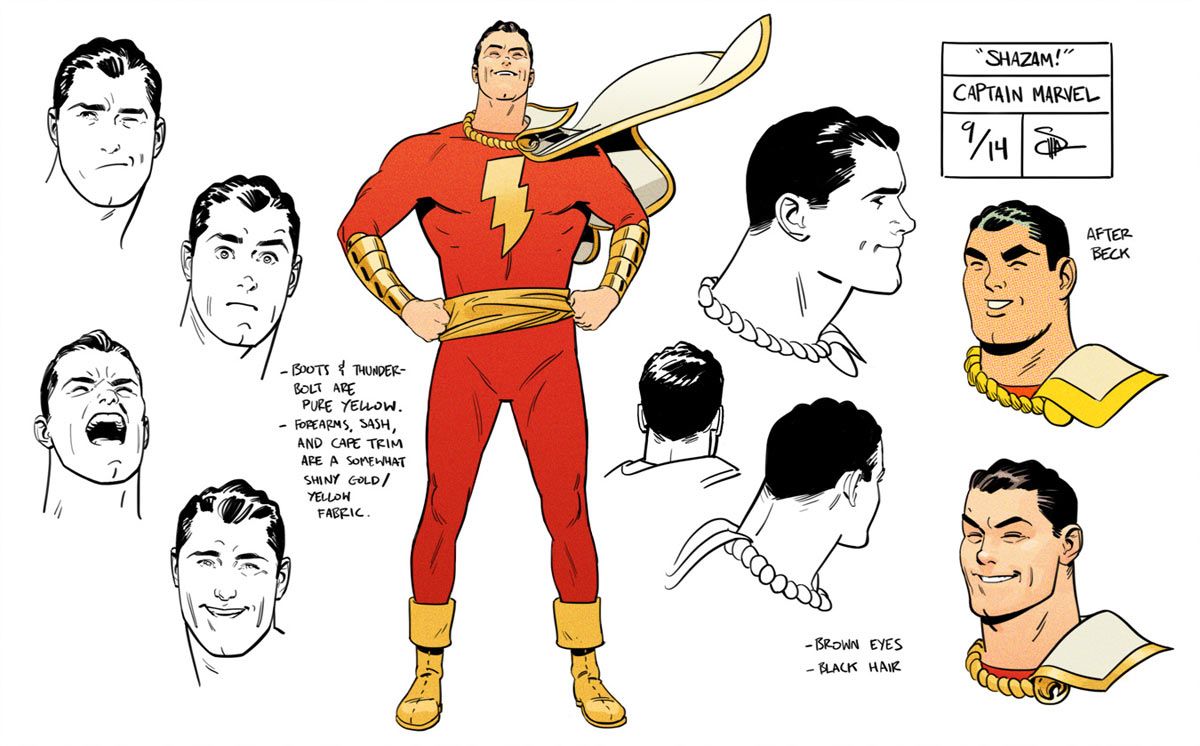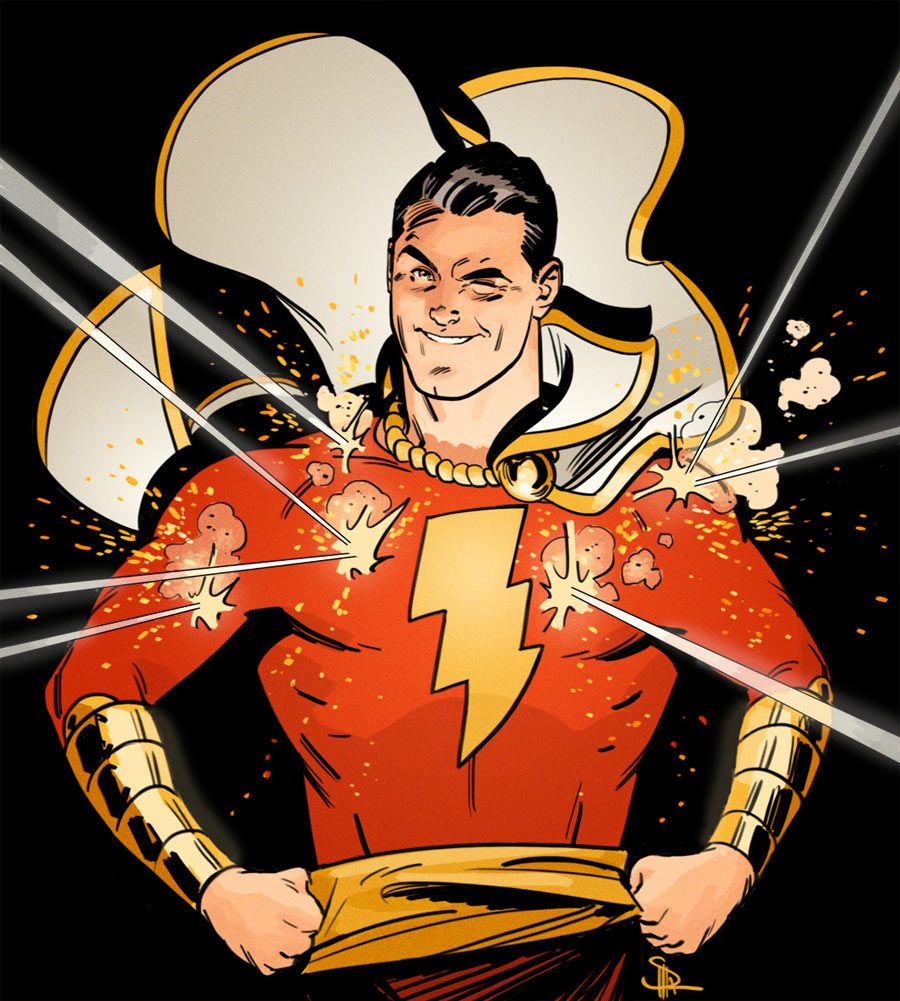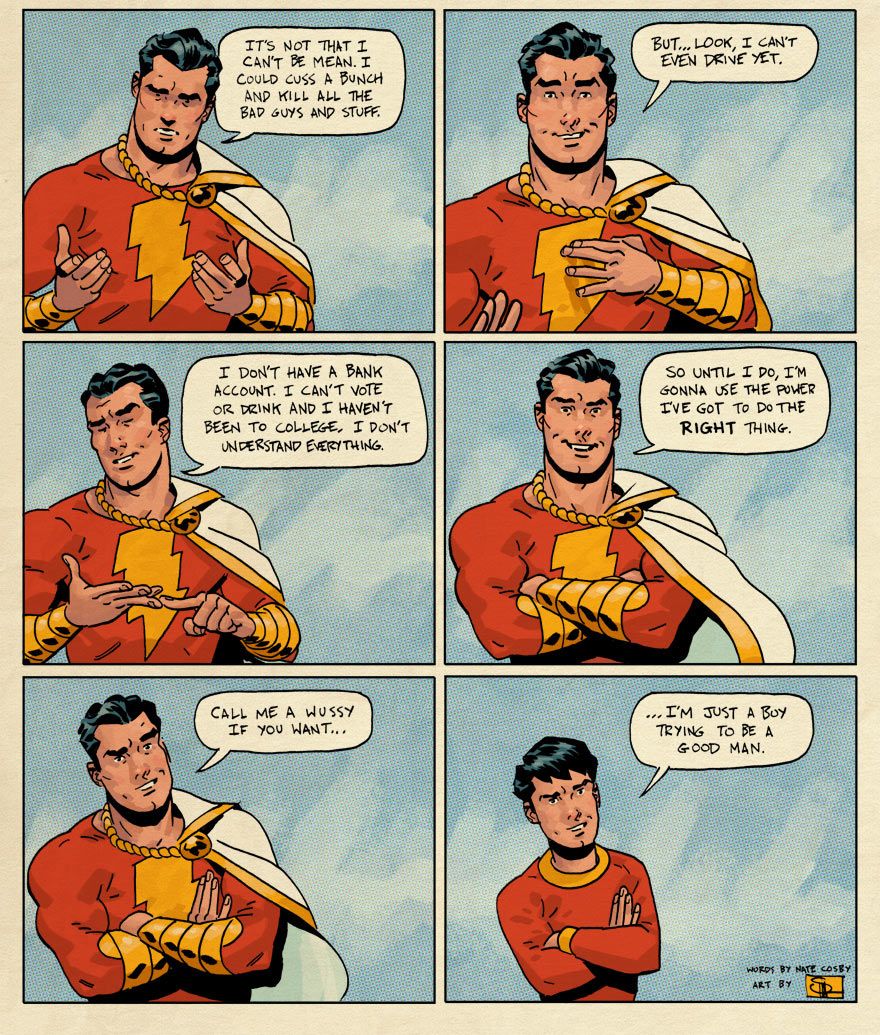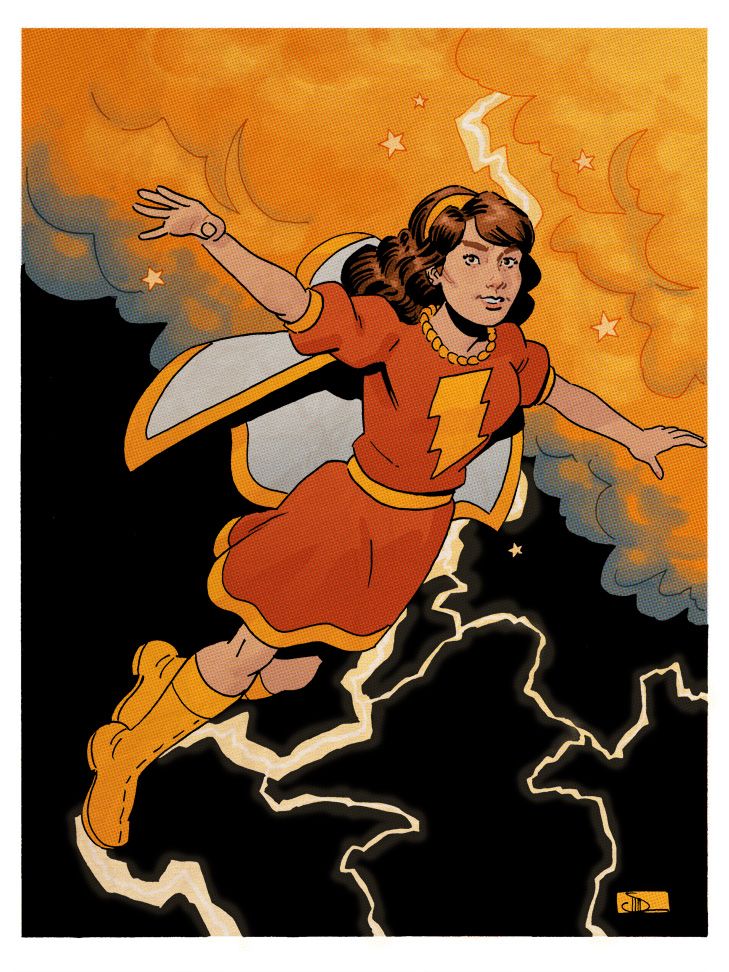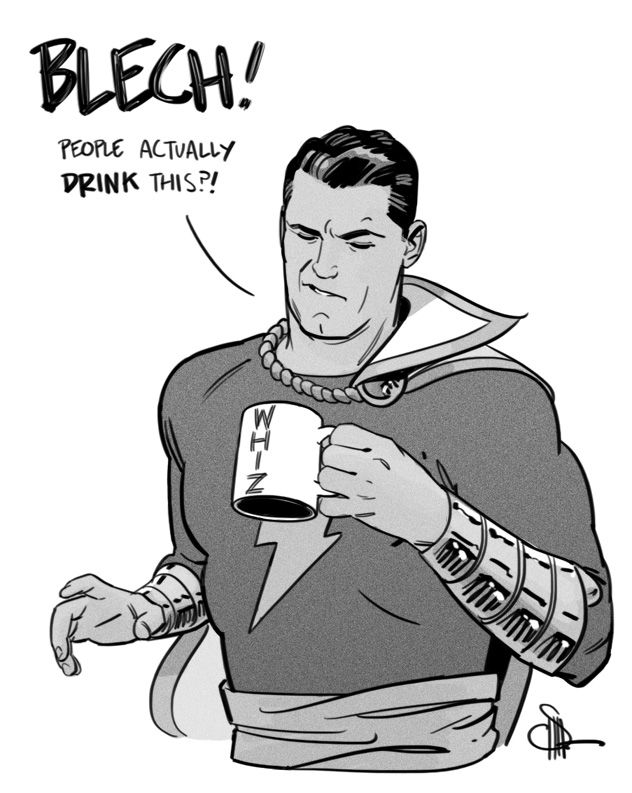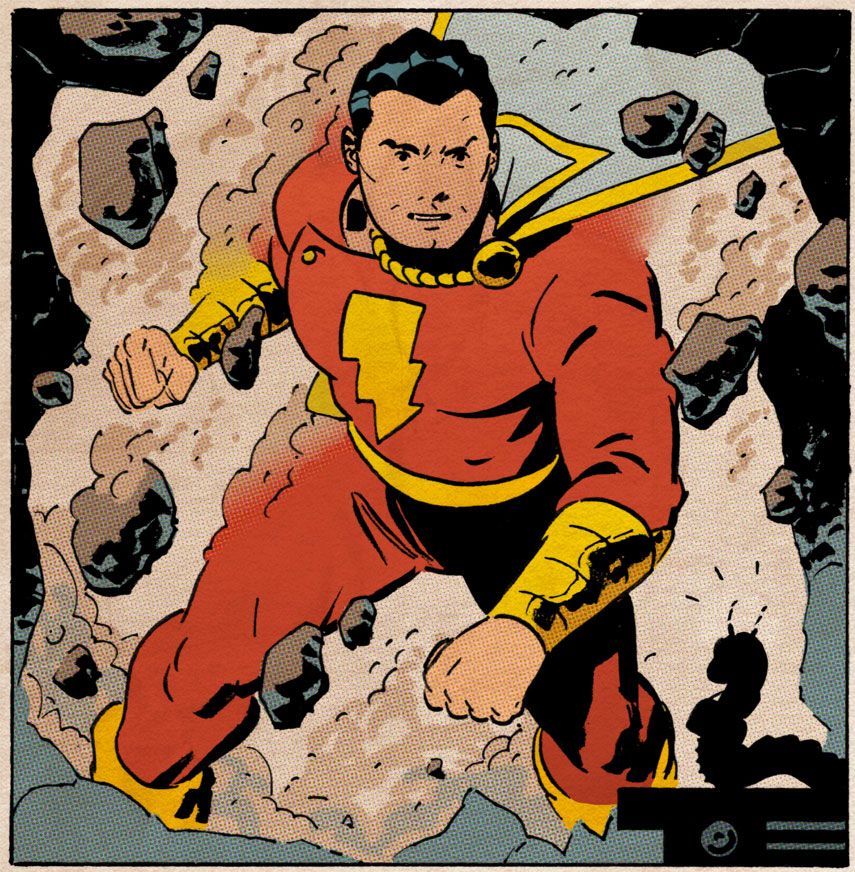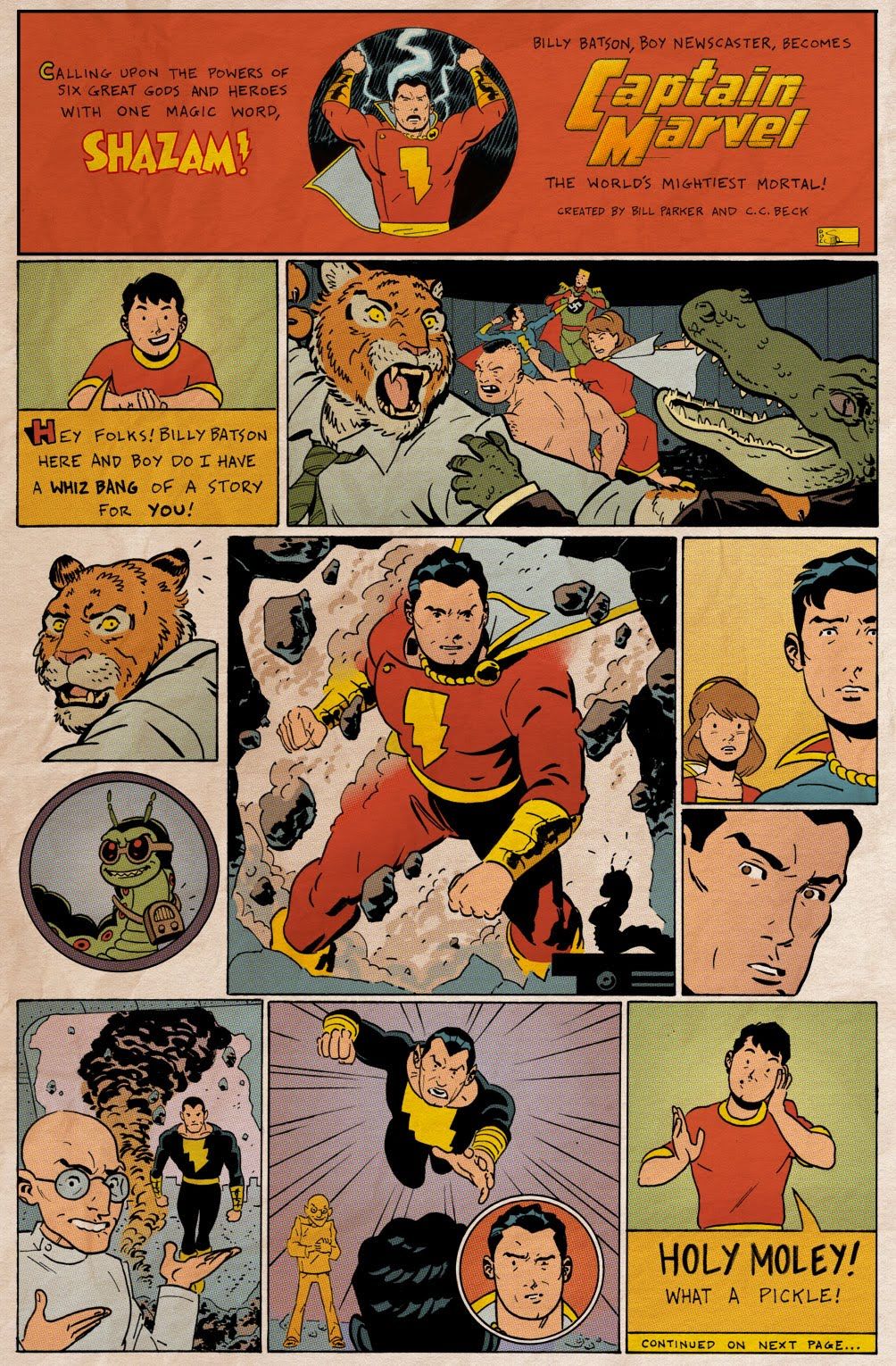If you follow a lot of comic book artists on social media, odds are you've come across a piece of Shazam fan art from Evan "Doc" Shaner. Known for his recently concluded run on Dynamite Entertainment's "Flash Gordon" series, Shaner established himself years ago as a Captain Marvel superfan by posting a string of Marvel family fan art to his personal blog. Fast forward a few years, and Shaner has characters like Superman, Deadpool, the Ghostbusters and Flash Gordon on his resume -- and with the upcoming "Convergence: Shazam" two-part series, he can finally add Captain Marvel to the list.
RELATED: "Secret Wars" Launches Marvel Western "1872" From Duggan, Shaner
The two-month "Convergence" event will see various realms, worlds, characters and status quos from DC Comics' 75-year history brought to the present by way of dozens of new limited series. "Convergence: Shazam" will team Shaner up once more with his "Flash Gordon" teammates: writer Jeff Parker and colorist Jordie Bellaire. In a previous interview with CBR News, Parker talked about what makes Shazam so appealing to him and teased the involvement of "Gotham By Gaslight's" Batman in the series. Now, Doc Shaner explains to CBR News what initially drew him to Shazam -- and the one obscure Cap character they just couldn't fit into their "Convergence" tale.
CBR News: In his 75 years of existence, the Captain Marvel comics have grown to encompass a lot -- from a talking tiger to an entire family of spinoff heroes. Was it hard to fit all of that into the two-issue "Convergence: Shazam"? Was there anything from Shazam's history that you were pushing or campaigning for Jeff to include?
Evan Shaner: You know, one of the nice things about working with Jeff is that I rarely have to say, "Can we do this? Can we put this in for me?" Jeff and I are very similar in the books we read and the stuff we like and the things we want to do, so I don't think I had to say anything -- at least for "Shazam." Well -- I think I jokingly asked for Mr. Banjo. Even for Captain Marvel villains, he's pretty obscure and, compared to all these maniacs and monsters, he's just a regular dope with a banjo.
Well, that's gotta make it into the story.
That's the kind of thing that didn't make it in. [Laughs] It's only two issues, so we only have so much room. That said, not even just as the guy drawing it who wants to get the most out of this two-issue story -- for me, as the reader and as the Captain Marvel fan, the book has got just about everything I would want.
Is there anything else you can tease regarding your big "Shazam" debut?
Jeff really did a great job of throwing all the toys that you really want to see in a story like this in there. Not that there's so many characters or there's so many different threads to follow, but in a way that I really think fans like myself would get excited about. Like I said, to me as a reader, even if I wasn't drawing this, I would love this book. It's just a pure celebration of the stuff that this comic is about.
I was surprised when I read the script for the first time at how much time we spend with [Shazam's alter ego] Billy [Batson]. That's always been an aspect of the comics, of course, that you spend just about as much time with Billy as you do with Cap. But considering we only had two issues, I really expected to see Billy for a sec and jump right to Cap. We get a really nice section with Billy and learn a little more about what who he is and what he brings to Captain Marvel.
When did you first encounter Captain Marvel?
I'm not really sure. I don't know if there was a specific point. I was aware of -- you and I are about the same age, aren't we? We're a year apart. I was aware of the [Jerry] Ordway/[Peter] Krause run in the '90s, but only indirectly. I didn't really read comic books as a kid, or at least the superhero stuff. I was definitely aware of Jerry and Pete's run, so I knew the character, and when I got back into comics near the end of high school, he'd show up every now and then -- I think he was part of the JSA at the time. I was at least aware of who Captain Marvel was. Then at some point in college I started to gravitate towards that kind of character, and Captain Marvel went to the top of my list very quickly.
What was it about that character that first got your attention? Was it the magical element, the idea of a kid turning into a powerful hero?
I think it was the entire package. It's hard for me to pinpoint a specific thing about him that hooked me. I've noticed over the years that I'm drawn to characters that wear red and yellow. All my favorite DC characters wear red and yellow and it took me an embarrassingly long time to notice that. But of course, he's also the ultimate wish fulfillment character. The kid alter ego, the magical aspect of it, the insane supporting cast. I've always liked Superman, but with Captain Marvel it was "Hey, look here! It's Superman, except there's also all this other crazy stuff thrown in! And also, it's drawn by one of the greatest cartoonists who ever lived!"
Jeff Parker spoke about that a bit in our interview with him about the "Convergence" title, about how Captain Marvel has a talking tiger and Mister Mind, a super villain that's a worm, in his supporting cast.
Oh yeah, all those fun ideas that Otto Binder brought to the book. Eventually he moves over to Superman and all that great, fun stuff from Silver Age Superman comics was written by him. Once you realize that Brainiac and Bizarro and any of the great Silver Age Superman stuff is by the same guy who basically came up with everything you know about Captain Marvel, it makes complete sense.
Since you are such a big Captain Marvel fan, I feel like if the internet was going to handpick a "Shazam" creative team, you would definitely be the artist. So how did you get involved with this book, thus making the Internet's dream come true?
[Laughs] The editor, Marie Javins, contacted me last summer kind of out of the blue. I had no prior experience with her and she asked me if I'd like to be involved. One of the assistant editors, Brittany Holzherr, had shown Marie the [digital-first] "Adventures of Superman" issue I did, and apparently that's what got them thinking of me for "Shazam!" Marie asked me if I'd like to be involved on the print side of things and do this two-issue mini event tie-in. I told her I was interested, and when she wrote me back, all she really told me was that it was "Shazam." I didn't know anything else about it and, like a real rube, I took the gig immediately. I told my wife, "I'll do this gig if it's the new Shazam or anything. I have no idea what this book is." It was much later before I found out that it was the Captain Marvel that I'm a fan of. And then it was months before I found out Jeff was writing it.
In addition to working with Jeff Parker again, you're also working with colorist Jordie Bellaire again on "Shazam." Is this the longest working relationship you've had with a specific colorist?
Yeah, definitely, just because the first year or two working in comics, I was either coloring myself or I was jumping from one book to another, even from one company to another. I think before Jordie [and "Flash Gordon"], the most I'd done [on a series] was a two-issue stint on [IDW Publishing's] "Ghostbusters." So those eight issues of "Flash Gordon" with Jordie are definitely the longest run I've done, period, and also with another colorist. Then to jump from "Flash" to "Shazam," this is definitely the longest I've worked with somebody.
Now that you've worked with Jordie for so long, does knowing that she is coloring your work affect the way you approach illustrating pages?
Oh, yeah. There are certain things that I know I, without thinking, kind of point towards Jordie. It's moreso being comfortable in knowing that I can put something out there and not have to worry about how Jordie's going to handle it. Like, all the warping effects in "Flash Gordon." I didn't know the first time that she was going to do that rainbow effect on it, so from there on, knowing how she was going to handle a certain kind of effect really made me far more comfortable. It's hard for me, sometimes, to let go of that control, having colored myself in the past. But working with Jordie, it's a treat because I know that what I get back is going to be solid work.
Does the Parker/Shaner/Bellaire squad have a team name or matching t-shirts or anything at this point?
[Laughs] No, but we will now! Brand new matching leather jackets with some stupid name on the back, that's what we'll do.
Do you have a definitive Captain Marvel story, one that you feel somehow manages to condense all of his history into one tale?
That's tricky because I'm definitely one of those guys who never -- I don't know that for any character. I couldn't pick a specific run just because, you know, when you're reading those comics, you tend to think of that character as a collection of stories. There's only so few characters that are really defined by one story, for me. The easy answer would be any of the Binder, [C.C.] Beck comics, the original run of Golden Age "Captain Marvel Adventures" kind of stuff. There's also the original Monster Society of Evil storyline, which is definitely great and character defining, but there's a lot of tricky things about it -- politically incorrect stuff that just wouldn't fly today, obviously. I don't know that I could say that there's another storyline that's like, "That's Captain Marvel right there in a nutshell," because I think he encompasses so much, especially within comics history.
That said, you know, I'm also really easy to please, so there's not much I wouldn't recommend. I love Ordway's original "Power of Shazam" book. Anything he did with the character is great, the run with Pete Krause included. I don't know exactly how people feel about it in general, but I liked Jeff Smith's "Monster Society of Evil." I see a lot of people who don't like it for one reason or another, and plenty who do -- I definitely am on the side that likes it.
What makes the character fun for you to draw. Obviously you're a big fan of him as a reader, but I imagine that approaching him as an artist has to be a little different.
A lot of the things that make him fun to draw are what, for me personally, make him fun to read. Just like with Flash Gordon. I love having a positive lead character, somebody who's optimistic and maybe a little naive and innocent -- that really jumps into the middle of things with a smile. That kind of stuff is more fun for me to draw, personally. I draw plenty of the angry and grim stuff, and it's not like that isn't fun too, in it's own way. But for me, personally, I tend to gravitate towards that type of [positive] character anyway. There are so many comics out there already with characters who are angry all the time or are just sitting around feeling bad for themselves, to have a chance to draw someone like Flash or Cap who epitomizes that positive type of character, who is having fun doing what he's doing and jumps at the chance to help, it's a blast. I can't complain.
"Convergence: Shazam" #1 arrives on April 29.

